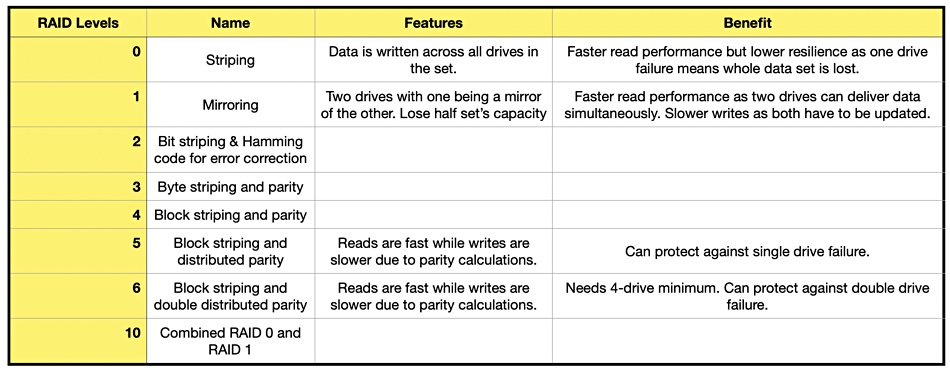RAID – Redundant Array of Inexpensive Disks. Disk drives can fail, in which case their data contents are lost. RAID is a way of countering this by combining disk drives into logical units to provide resilience against drive failure with data recoverability and even faster drive performance. Parity schemes can also be used to help recover otherwise lost data on a failed drive. There are various ways of doing this; the so-called numbered RAID levels, with each level providing its own mix of resilience and performance. The cost of RAID levels is that some portion of the overall combined group of disk drive’s capacity, known as the overhead, is used to provide the RAID level features. Here is a table showing some RAID levels;

RAID 5 can protect against a single drive failure in configurations with 3 or more drive. RAID 6 can protect against a double drive failure in configurations of 4 or more drives.
A hardware RAID card can carry out parity calculations, offloading the host CPU and speeding otherwise slower disk IOs. When a disk in a RAID set fails it needs to be rebuilt – using a spare drive, and this rebuild can take hours, if not days, with modern high capacity drives, such as 18, 20 and 22TB drives. A 16TB disk drive rebuild can take 24 hours. The higher the capacity the longer the rebuild time.


